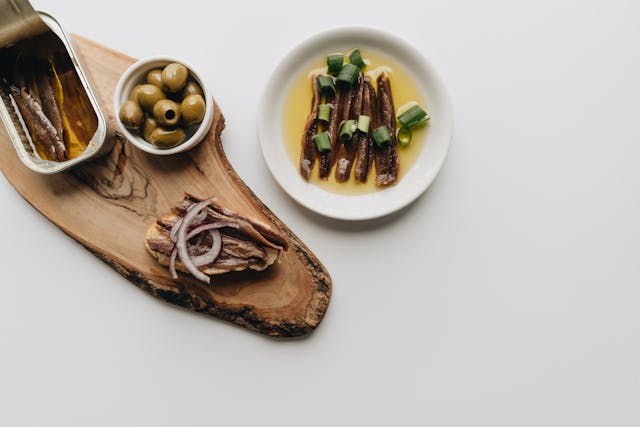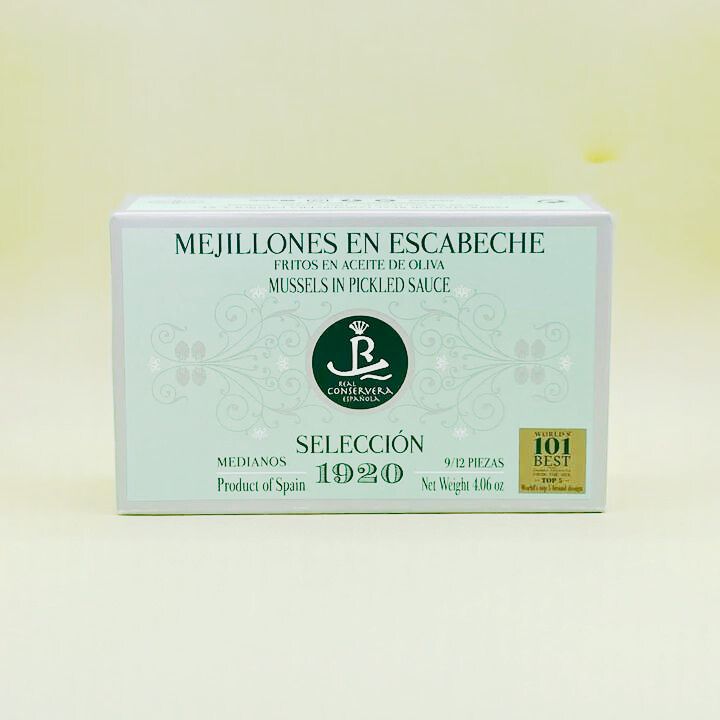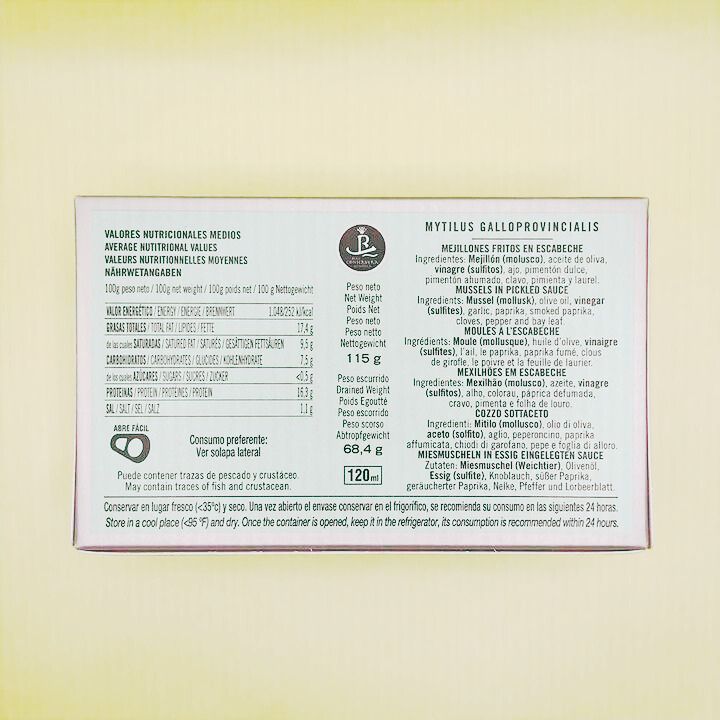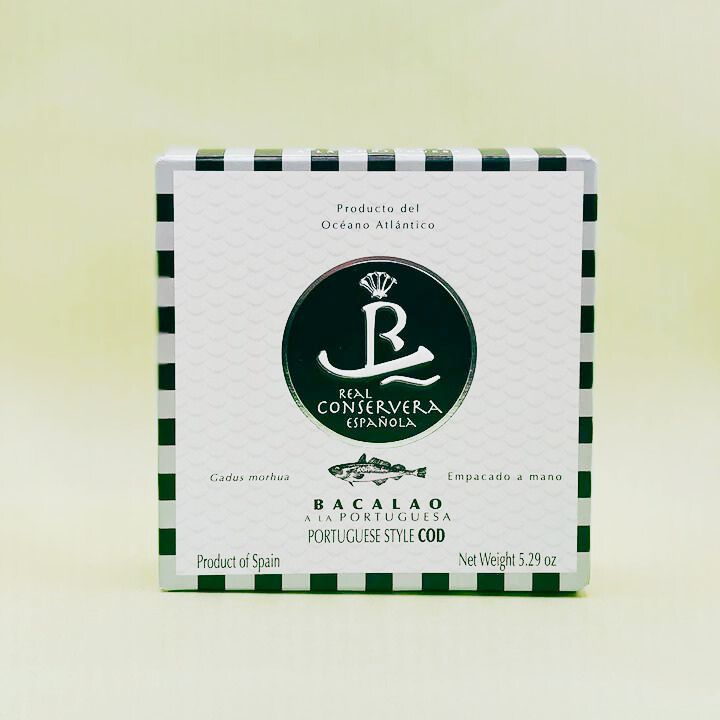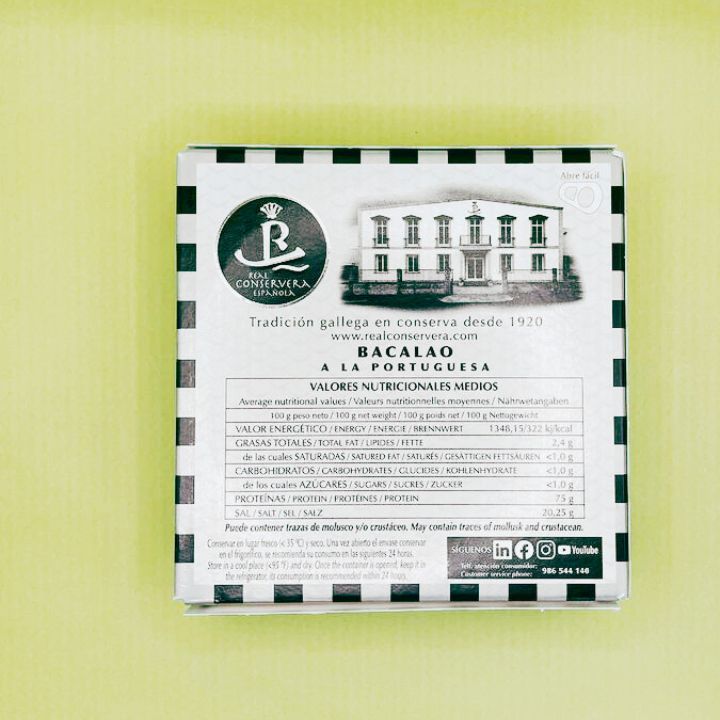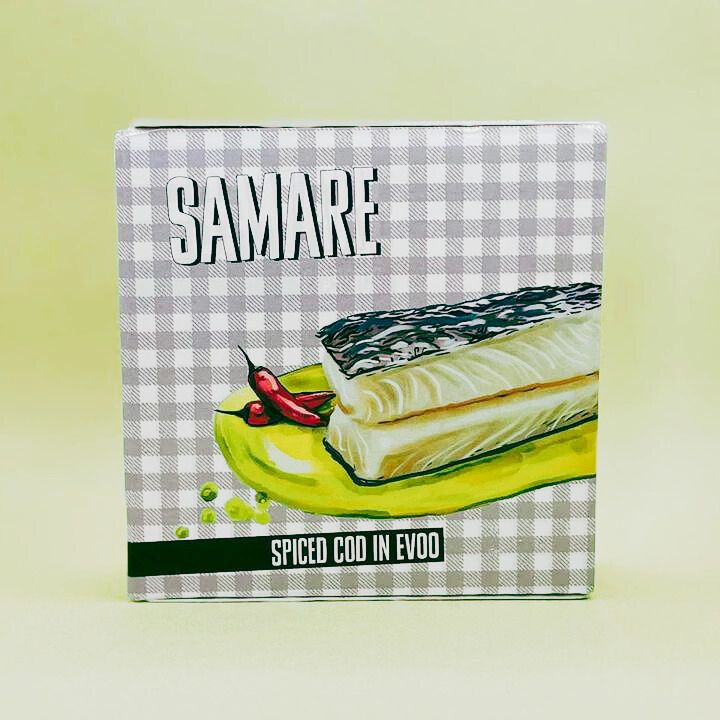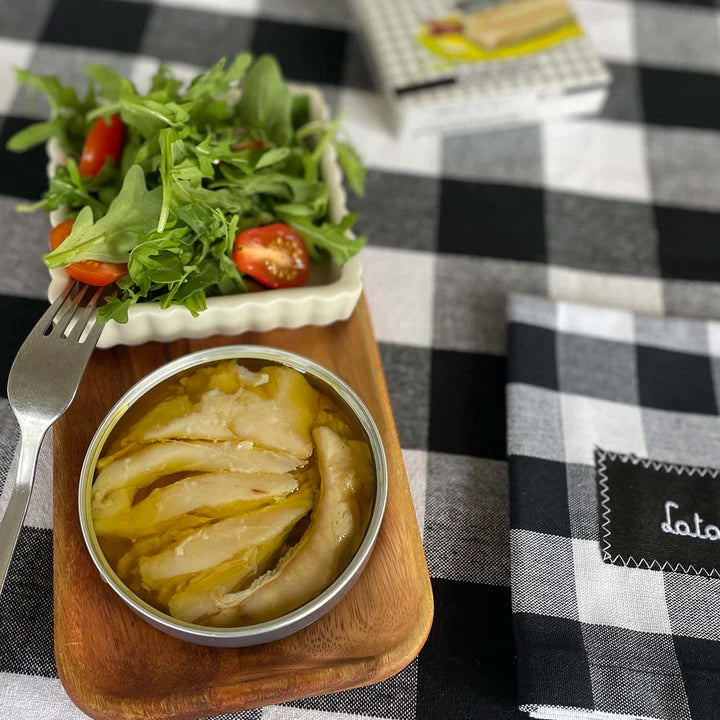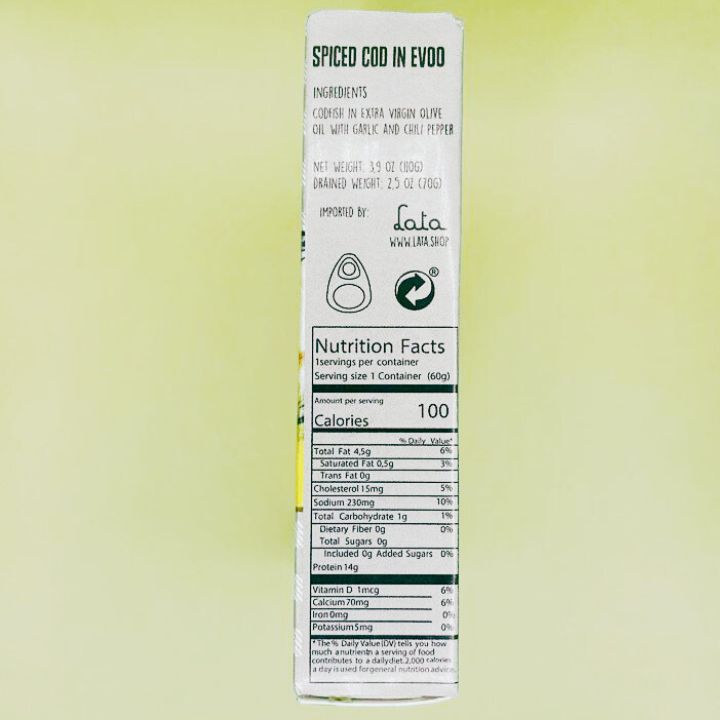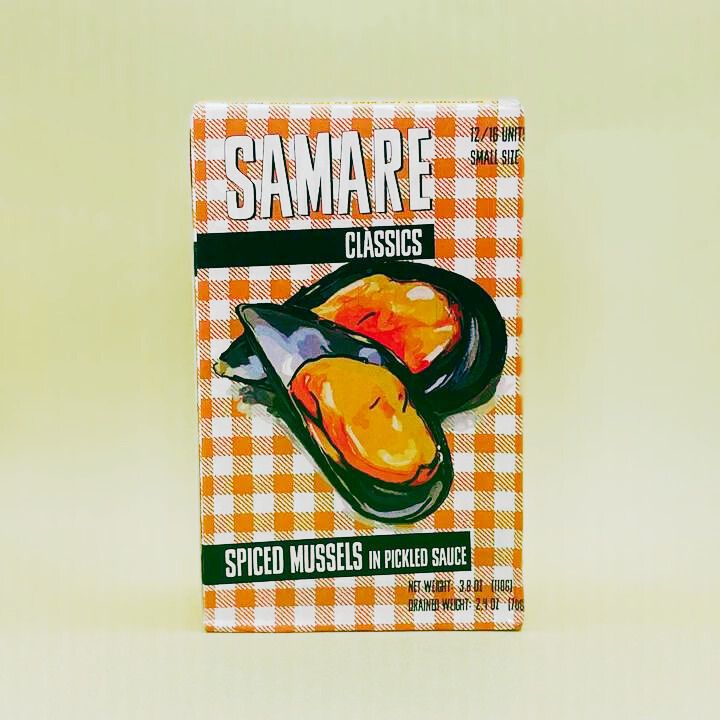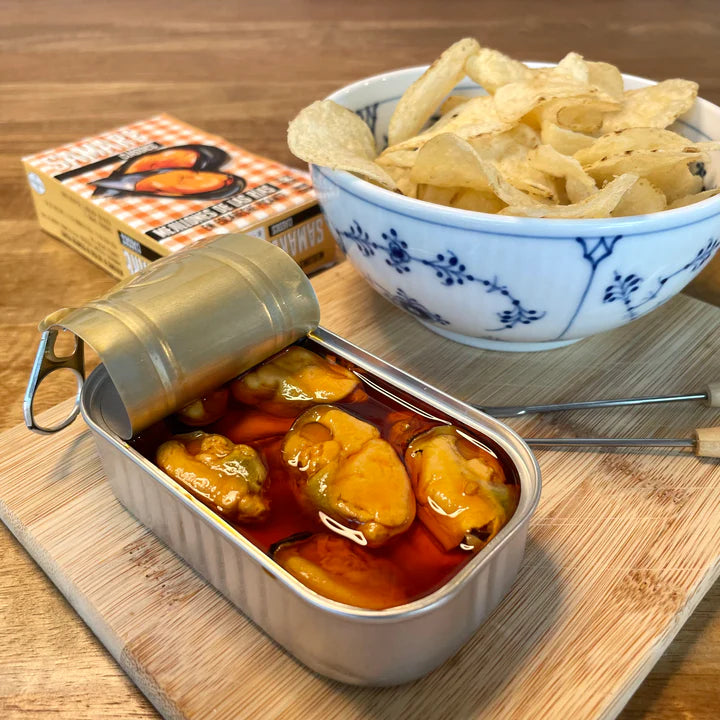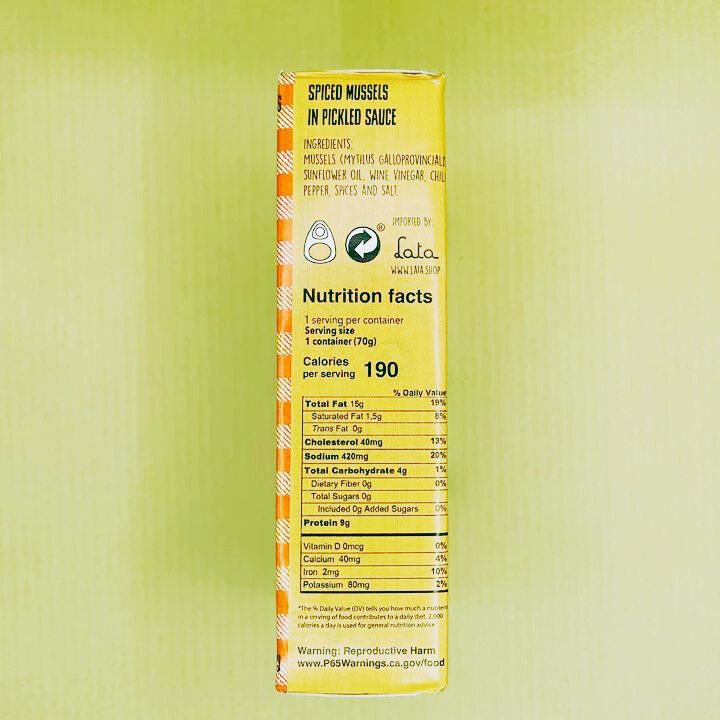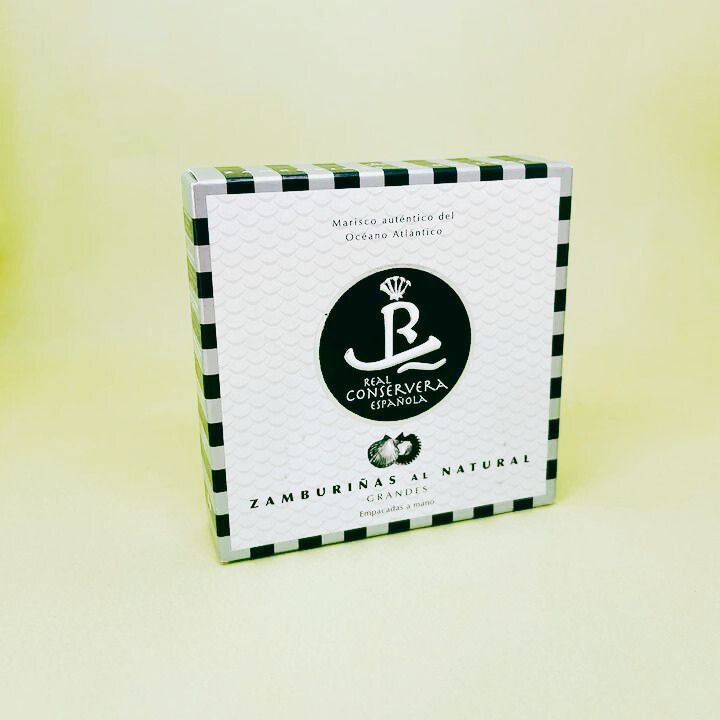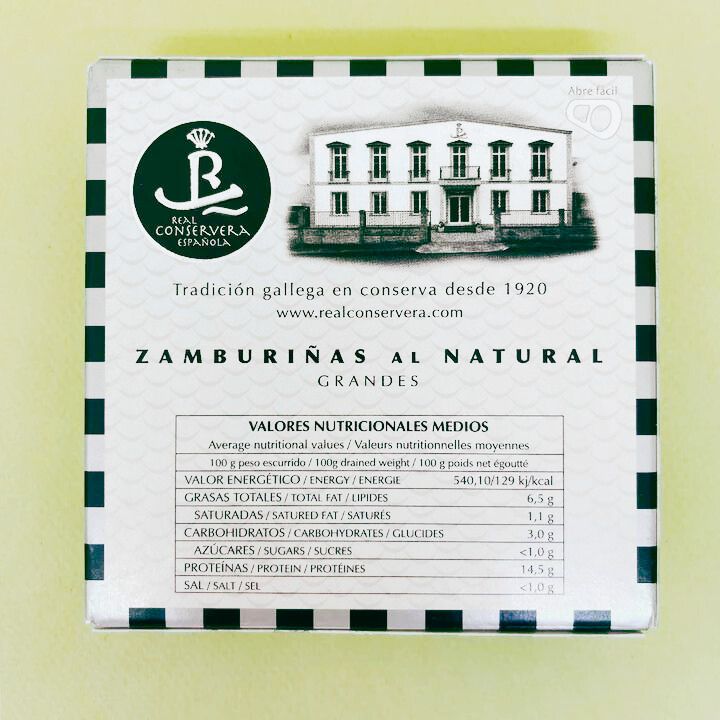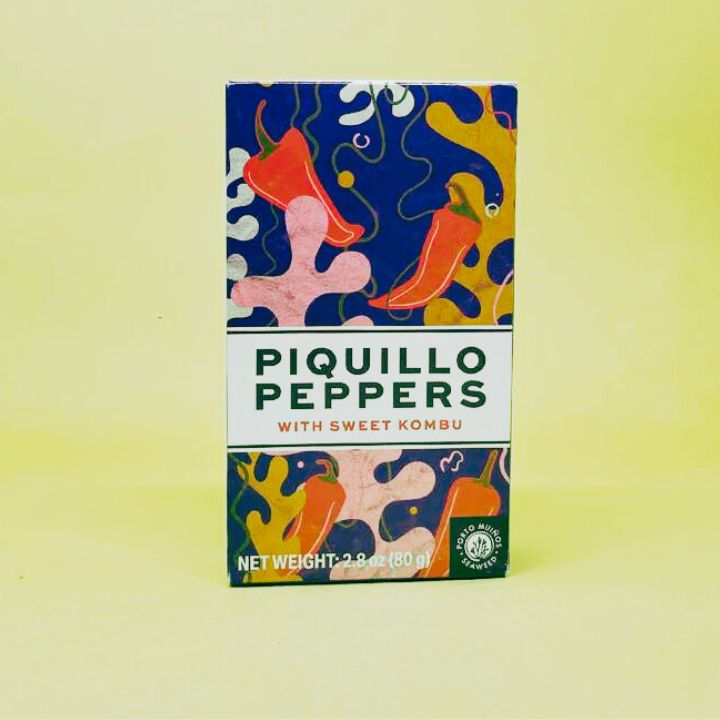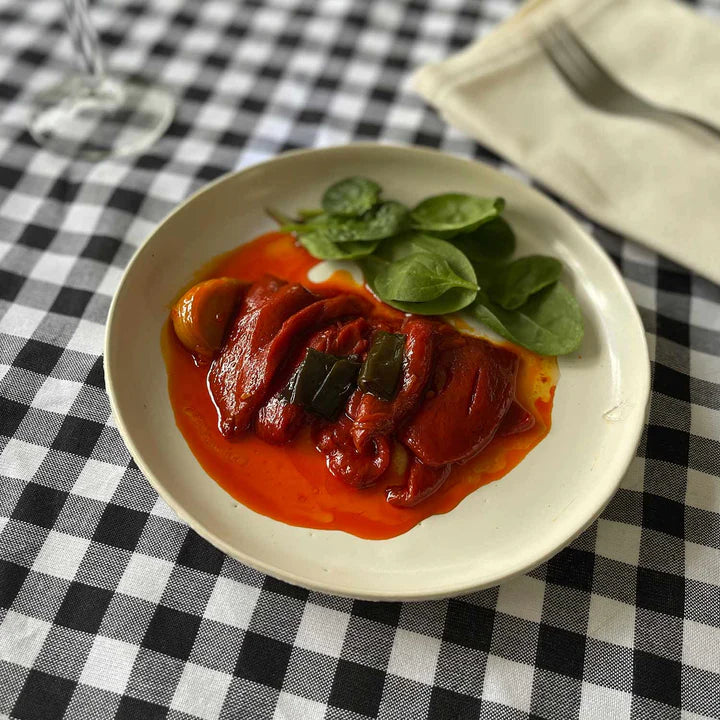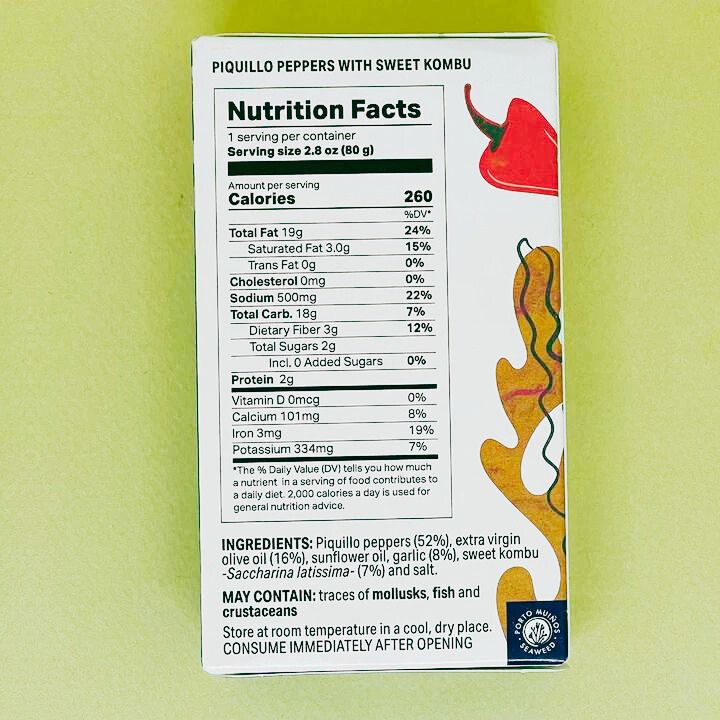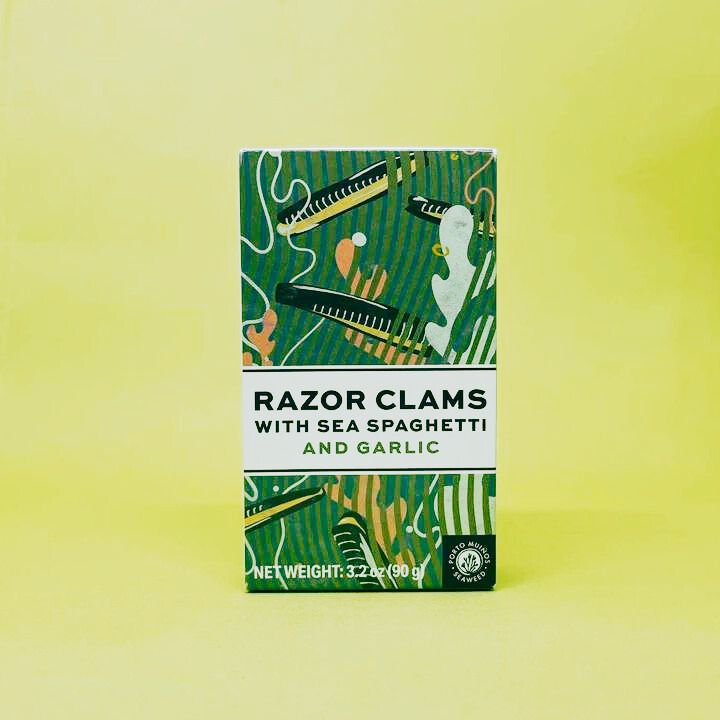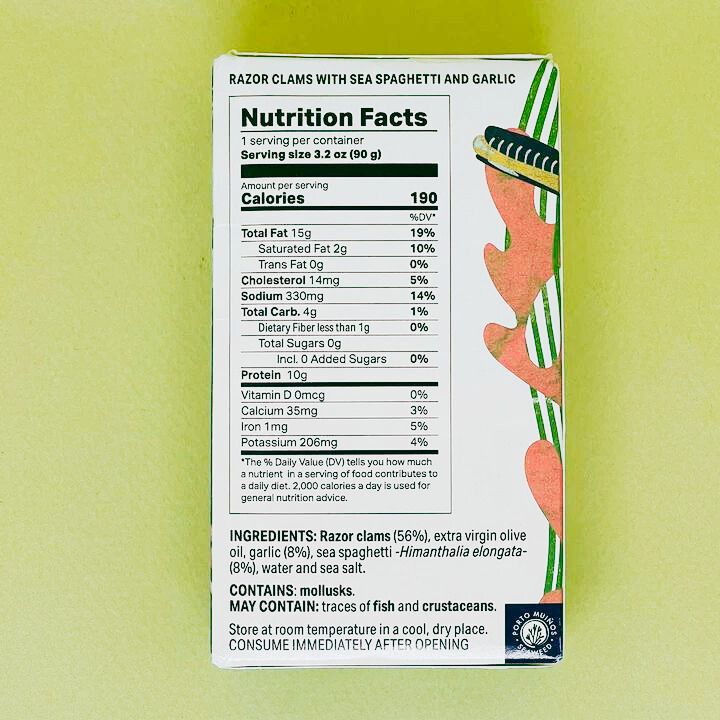Spanish Conservas and Fine Wines Share a Common Craft Philosophy
Preserved Treasures.
On a misty morning in Spain's Rías Baixas, two harvests unfold simultaneously across this verdant coastal landscape. Inland, workers carefully clip Albariño grapes from terraced vineyards, filling wicker baskets with fruit destined for the region's celebrated white wines. Meanwhile, along the rocky shore just miles away, wooden boats return laden with the day's catch—mussels, cockles, and small sardines that will become premium conservas, Spain's artisanal tinned seafood.
These parallel harvests, seemingly unrelated, share a surprising kinship in philosophy, technique, and cultural significance that has largely gone unrecognized. As I discover during visits to both wineries and conservas producers throughout northern Spain, these two traditions—one celebrated globally, the other only recently gaining international recognition—represent remarkably similar approaches to transforming nature's bounty into something greater than its origins.
"We don't think of ourselves as being in different industries," explains Manuel Castro Souto, whose family operates both Bodegas Castro Ventosa winery and Conservas Aréa in Galicia. "Whether working with grapes or anchovies, we're doing essentially the same thing—capturing a moment of perfect ripeness and creating conditions for it to evolve into something more complex."
This insight—that fine winemaking and traditional conservas production share fundamental principles despite their different ingredients—offers a new lens for understanding both crafts and why they've endured despite industrialization pressures that have transformed most food production.
The Terroir Connection: When Place Becomes Flavor
Standing among Albariño vines with the Atlantic visible in the distance, winemaker Cristina Mantilla discusses how this unique location shapes her wines.
"The granite soils, the salt air, the specific interplay of sun and fog—you can taste all of this in the glass," she explains, handing me a sample of last year's vintage. "This couldn't be replicated elsewhere, even with the same grape varieties."
This concept of terroir—the environmental conditions imparting distinctive characteristics to agricultural products—has long defined fine wine. Yet just miles away at Conservas Los Peperetes, owner Antonio Pérez describes almost identical principles when discussing his mussels.
"These aren't just any mussels—they're mussels from this specific ría, growing in waters with particular mineral content, temperature patterns, and plankton composition," he insists, opening a tin produced last autumn. "The flavor is inseparable from place."
Both traditions recognize that their fundamental ingredients—grapes or seafood—serve as vehicles for expressing specific environments. Just as wine enthusiasts distinguish between Albariño from Rías Baixas versus Ribeiro, conservas aficionados differentiate between anchovies from Cantabria versus the Mediterranean coast.
This terroir sensitivity extends to production decisions. At Bodegas Tomada winery, different vineyard parcels are harvested separately based on soil composition and sun exposure. Similarly, at Conservas Ortiz, fishing boats communicate specific coordinates of their catch, allowing processors to track how location affects fat content and flavor in the resulting conservas.
"The bonito caught off Bermeo versus those from twenty miles westward have subtle but significant differences," explains Carlos Ortiz. "We keep these batches separate throughout processing, just as winemakers separate grapes from different vineyard blocks."
This attention to provenance represents a philosophical position shared by both traditions—a belief that place isn't merely background but essential character-defining information worthy of preservation and expression.
The Seasonal Imperative: Working Within Nature's Calendar
In both fine wine and traditional conservas production, the calendar governs all activity—not the artificial timetables of supply chains but the natural rhythms of ripening and migration.
"The moment of harvest defines everything that follows," explains winemaker Luis Anxo Rodríguez in Ribeiro, examining grape clusters for perfect ripeness. "Pick too early, you lack flavor development. Too late, you lose acidity. There's a window of perhaps five days that determines the wine's entire future."
This same temporal sensitivity drives conservas production. At Güeyu Mar, owner Abel Álvarez describes the brief period when mackerel reach peak condition.
"For about three weeks in late summer, the mackerel have reached their ideal fat content but haven't yet started their autumn migration," he explains. "This brief window determines our entire production schedule."
Both traditions organize their years around these critical moments, maintaining flexible workforces that expand dramatically during harvest periods. Both accept that nature dictates timing rather than commercial convenience.
"In industrial wine production, you schedule bottling when it's efficient for your operation," notes enologist María Varela. "In artisanal winemaking, the wine tells you when it's ready."
This same perspective guides conservas producers like Pedro Martínez of Ramón Peña.
"We could process sardines year-round by sourcing from different regions, but that would miss the point," he explains. "Our job is to capture a specific seasonal moment when these fish are at their absolute peak in these specific waters."
This shared seasonal orientation creates similar workflow patterns. Both industries experience intense harvest periods followed by more contemplative phases of monitoring development. Both maintain traditions marking these seasonal transitions—the wine harvest festivals of autumn finding parallels in the conserveras' celebrations when the first bonito arrives in summer.
"The rhythm creates a certain mindset," reflects Castro Souto. "When your work responds to natural cycles rather than quarterly targets, you develop different values and perspectives."
The Transformation Artists: Guiding Evolution Through Time
Perhaps the most profound connection between winemaking and conservas production lies in how both guide ingredients through transformative processes that unfold over extended timeframes.
"We don't simply bottle grape juice—we create conditions for complex development," explains Raúl Pérez, one of Spain's celebrated winemakers, as we sample wines of different ages in his cellar. "Every decision—fermentation vessel, temperature curves, aging environment—shapes how the wine will evolve over months or years."
This same developmental mindset distinguishes traditional conservas from mere food preservation. At Conservas Brétema, María Jesús López demonstrates how different olive oils are selected based not just on current flavor profiles but anticipated chemical interactions over time.
"The oil isn't merely packing material—it's an active participant in flavor development," she explains, opening identical fish processed with different oils. "As the fish's natural fats slowly exchange with the oil over months, entirely new flavor compounds emerge."
Both traditions understand their products as living entities that change through chemical and biochemical processes continuing long after human intervention ends. Both require anticipating how today's conditions will influence development pathways months or years later.
"A winemaker must think like a chess player, several moves ahead," suggests enologist Fernando García. "We're not creating finished products but setting trajectories."
This same predictive craft guides conservas masters like Abel Álvarez.
"When selecting cooking times or salt levels, I'm thinking about how these elements will interact six months from now," he explains. "The heat applied today creates compounds that will slowly transform in the tin. This isn't preservation—it's orchestrated evolution."
This developmental perspective creates remarkably similar aging practices. Both industries maintain extensive libraries of past vintages or batches, regularly sampling to track development patterns and refine future production. Both recognize that different products follow different aging curves—some peaking quickly, others requiring years to reach optimal expression.
"Certain sardines are at their peak after three months in tin," notes Antonio Pérez, "while our bonito reaches ideal texture only after two years. Learning these patterns requires generational experience."
Similarly, winemaker Cristina Mantilla explains how different vineyard parcels produce wines with varying aging potential.
"The grapes from our coastal plots make wines that show beautifully after six months but don't develop significantly beyond that. Our inland fruit needs five years to reach its potential but will continue evolving for decades."
This shared appreciation for time as ingredient rather than constraint distinguishes both traditions from industrial production focused on consistency and immediate consumption. Both create products specifically intended to capture time's transformative effects rather than resist them.
The Craft of Minimal Intervention
Both fine winemaking and traditional conservas production have evolved toward philosophies of minimal intervention—the understanding that the producer's role is facilitating natural processes rather than controlling them through technology.
"The best winemaking decisions are often what you choose not to do," explains Luis Anxo Rodríguez. "Not filtering, not adjusting acid, not adding commercial yeasts—trusting the grape's inherent qualities instead of imposing technical solutions."
This same restraint characterizes premium conservas production. At traditional facilities, I witness repeated decisions to forgo efficiency-enhancing technologies that might compromise quality—mechanical filleting devices remain unused when fish are particularly delicate; temperature-accelerated processing is avoided despite potential time savings.
"Industrial production views technology as constantly improving processes," notes Pedro Martínez. "In our tradition, we recognize that some interventions, while efficient, fundamentally alter character in ways mechanical measurements can't detect."
This shared skepticism toward certain technological "improvements" reflects both traditions' reliance on sensory judgment over purely technical metrics. While both employ modern safety testing and quality control, final decisions about readiness remain matters of human evaluation.
"Laboratory analysis tells us about chemical components but not harmony," explains winemaker Raúl Pérez. "The decision of when to bottle comes down to taste, smell, and tactile sensation that no measurement can replace."
Similarly, at Conservas Aréa, the determination of precisely when fish is properly cooked before tinning remains a sensory judgment.
"We have temperature probes and timers," admits the cooking master, "but the final decision comes from appearance, aroma, and the specific resistance when pressed—knowledge impossible to fully quantify."
This sensory primacy has preserved both traditions against full industrialization. While most food and beverage production has been reengineered to eliminate subjective human judgment, these crafts continue to rely on sensory expertise developed across decades of practice.
"The human nervous system remains our most sophisticated quality instrument," suggests Castro Souto. "No machine yet created can integrate the thousands of sensory inputs an experienced winemaker or conservas master processes instinctively."
Capturing the Harvest: When Land Meets Sea
The kinship between these traditions becomes most visible during harvest—the critical moment when natural ingredients transition from growth to transformation. Following both harvests on the same autumn day reveals striking parallels in philosophy and approach.
At a hillside Albariño vineyard, pickers move methodically through rows, making countless micro-decisions about which clusters to harvest. Some are left for another day; others are trimmed of imperfect berries before being gently placed in small baskets.
"Every handler makes hundreds of quality decisions per hour," explains the vineyard manager. "Each person is essentially performing quality control through selection."
That same afternoon at Burela's harbor, fishing boats return with sardines. The buyers from premium conservas producers inspect catches boat by boat, selecting only certain portions based on size, fat content, and condition.
"We might purchase just twenty percent of a boat's catch," explains the buyer from Conservas Los Peperetes. "Only those fish meeting our exact standards."
Both harvests proceed with remarkable gentleness. Wine grapes are transferred in small containers to prevent crushing and premature oxidation. Selected fish move in iced shallow trays rather than deep bins that would damage delicate specimens at the bottom.
Both harvests continue into processing with minimal delay—grapes entering destemming within hours of picking; fish entering cleaning lines within hours of landing. Both traditions recognize that time becomes enemy rather than ally during this critical transition phase.
"From vine to press within four hours—that's our standard," states winemaker María Varela. "Every minute beyond that represents quality loss."
Similarly, Pedro Martínez explains that his family's conservas facility was deliberately built adjacent to the harbor.
"The distance from boat to processing line is measured in meters, not kilometers," he notes. "Every hour of delay fundamentally changes what's possible in the tin."
This shared emphasis on harvest integrity—capturing ingredients at their peak and transferring them to controlled environments with minimal degradation—represents perhaps the most fundamental similarity between traditions. Both recognize that no subsequent craftsmanship can compensate for compromised raw materials or mishandled transitions.
The Aging Dance: Products That Tell Time
In a small room behind his winery, Luis Anxo Rodríguez maintains a remarkable collection—wines from every vintage he has produced, systematically organized by year and vineyard. Several times annually, he tastes across vintages to track their development.
"This is how we learn," he explains, pouring samples from three consecutive years. "By witnessing how our decisions play out across time."
This same practice occurs at traditional conservas facilities. At Conservas Aréa, a temperature-controlled room houses samples from decades of production, regularly tasted to understand aging patterns.
"We just opened tins from 2012 to evaluate how that season's unusually warm waters affected long-term development," explains the production manager. "This knowledge informs this year's processing decisions."
Both traditions maintain these extensive libraries not as museums but as reference systems—practical tools for understanding how present actions influence future outcomes. Both recognize that their products continue developing long after leaving their facilities, requiring ongoing study rather than assuming static quality.
This temporal awareness creates distinctive perspectives on storage and handling. Fine wines are shipped and stored with temperature monitoring to prevent development disruption. Similarly, premium conservas producers now include optimal storage guidance and even aging recommendations.
"Our bonito del norte reaches ideal texture after eighteen months in tin," notes Carlos Ortiz. "We date-stamp accordingly and recommend patience."
This temporal honesty—acknowledging that products evolve rather than remain fixed—distinguishes both traditions from industrialized counterparts promising absolute consistency across time and place. Both create products that intentionally capture temporal rhythms rather than transcending them.
"A great wine or conserva tells you not just where it's from but when," suggests Castro Souto. "It carries temporal information—the specific summer heat, the unusual spring rains, the early or late harvest. It's time made tangible."
The Heritage Keepers: Passing Knowledge Through Generations
In Ribeira Sacra's steep vineyards, I watch as 78-year-old Marcial López demonstrates pruning techniques to his grandson, correcting the angle of cut with gentle hands shaped by decades among these vines.
"Some knowledge can only be transmitted through direct experience," explains the younger López. "No manual or course can replace this lineage of practice."
This same generational transmission occurs in conservas facilities, where family knowledge passes through demonstrated practice rather than written instruction. At Conservas Ortiz, I witness a senior empacadora (female packer) guiding a younger worker through the precise pressure needed when handling delicate ventresca (tuna belly).
"The fingers must learn directly," she explains. "There's knowledge in the hands that can't be verbalized."
Both traditions maintain apprenticeship systems where embodied knowledge—information residing in sensory judgment and physical technique—passes directly from experienced practitioners to newcomers. Both recognize that certain crucial information exists beyond what can be formalized in procedures or mechanized through technology.
This knowledge transmission creates multigenerational perspectives distinct from quarterly-focused business operations. Both winemakers and conservas producers frequently reference decisions made by grandparents or great-grandparents still influencing current practice.
"My great-grandfather selected these slate tanks in 1923," notes winemaker Raúl Pérez, touching the stones. "He couldn't have known I'd be using them a century later, but his commitment to quality created possibilities I benefit from today."
Similarly, at Conservas Aréa, current processing still incorporates specific cutting techniques developed by the founder's wife in the 1880s.
"She discovered that cutting the bonito at this precise angle before cooking minimized texture damage during heat processing," explains the current owner. "We've never found a better approach despite a century of alternatives."
This multigenerational continuity creates distinctive decision contexts where tradition represents not nostalgic attachment but accumulated wisdom. Both industries evaluate innovations against extended timeframes rather than immediate efficiencies.
"When considering changes, we ask not just whether something works today but how it will influence products decades from now," explains enologist Fernando García. "Many 'improvements' fail this longer evaluation."
The Cultural Anchors: Beyond Commerce to Identity
What ultimately binds these traditions most profoundly is their expansion beyond commercial activity into cultural identity. Both winemaking and conservas production have transcended their origins as practical preservation methods to become emblematic cultural practices connecting communities across generations.
In coastal towns like Santoña in Cantabria, conservas production remains central to community identity despite employing fewer people than historically. Annual festivals still mark seasonal harvests, local museums document evolution of techniques, and families maintain connections to specific producers across generations.
"My grandmother cleaned anchovies for Conservas Codesa, my mother packed for them, and I continue this work," explains Teresa Rodríguez. "This isn't just employment but participation in cultural continuity."
Similarly, in wine regions like Ribeira Sacra, cultivation practices bind communities across time despite modernization elsewhere in rural life. Ancient vineyard walls are maintained communally; harvest celebrations preserve centuries-old traditions; family histories intertwine with specific vineyard parcels.
Both traditions have evolved beyond utilitarian origins to become carriers of cultural memory and identity—repositories of techniques, sensibilities, and values transmitted across generations. Both create products that communicate not just flavor but cultural information about relationships to place, time, and community.
"When someone opens our conservas or wine thousands of miles from here, they're experiencing not just food or beverage but our cultural perspective," reflects Castro Souto. "They're participating in our understanding of how humans should relate to natural abundance—with patience, care, and respect for origins."

Preserved Wisdom for a Fast-Moving World
As global food systems increasingly prioritize efficiency, standardization, and scalability, these parallel craft traditions offer valuable counternarratives about alternative relationships to production, time, and place. Both have survived industrialization not through rejection of all innovation but through careful discernment about which changes preserve essential character and which compromise it.
"The wisdom in both traditions lies in understanding that certain processes cannot be accelerated without fundamental transformation," notes food philosopher Dr. Carlos Menéndez. "Just as great wine requires years of cellar development that no technology can bypass, fine conservas require maturation periods that no process improvement can eliminate."
This shared appreciation for necessary patience—for allowing nature to work at its own pace—offers perspective in a culture increasingly oriented toward immediate results. Both traditions demonstrate that certain qualities emerge only through time and cannot be forced through technology or capital investment.
As I conclude parallel visits to bodegas and conservas facilities along Spain's Atlantic coast, what resonates most is not their differences but their common philosophy: that transforming nature's gifts into something greater requires not domination but partnership—working with inherent qualities rather than overriding them, respecting seasonal imperatives rather than transcending them, and preserving distinctive character rather than standardizing it.
"Whether handling grapes or sardines, we're engaged in essentially the same project," reflects Abel Álvarez of Güeyu Mar, who produces both wine and conservas. "We're creating a bridge between momentary natural perfection and extended human experience—allowing something beautiful but fleeting to be appreciated across time and distance."
In this shared mission lies perhaps the most valuable contribution of both traditions—preserving not just grapes or fish but ways of working that honor natural processes rather than merely extracting from them. As we navigate relationships between tradition and innovation, efficiency and quality, these parallel crafts offer wisdom about balancing essential tensions rather than resolving them.
"The tin and the bottle both achieve the same miracle," suggests Castro Souto. "They allow us to experience summer's perfect ripeness in the depths of winter, to taste specific places from thousands of miles away, and to appreciate the accumulated knowledge of generations who perfected these transformations."
This perspective frames both fine wines and traditional conservas not merely as culinary pleasures but as repositories of cultural wisdom about our relationship with time, place, and natural abundance—preserved knowledge that may prove increasingly valuable in a world grappling with disconnection from natural systems and the consequences of prioritizing efficiency above all other values.

